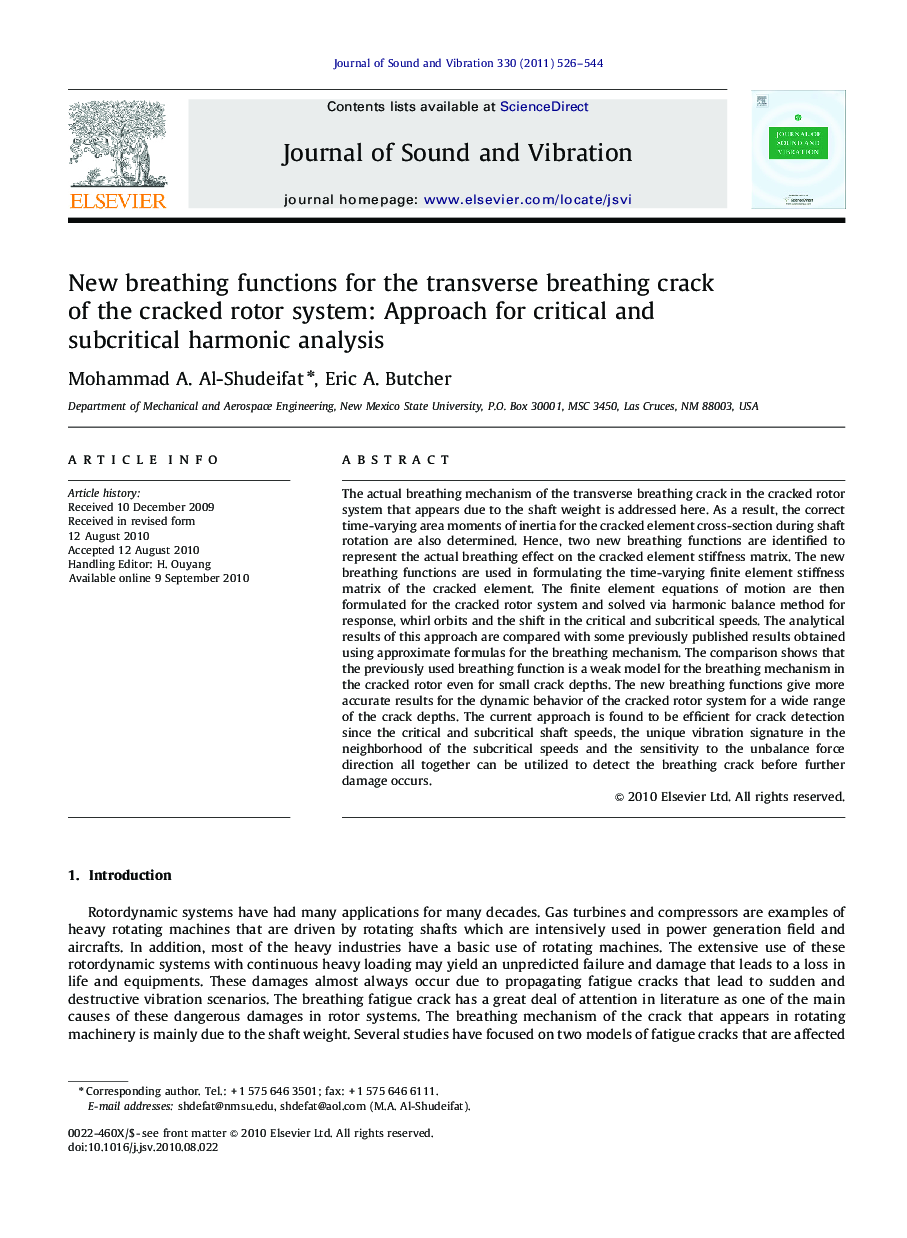| Article ID | Journal | Published Year | Pages | File Type |
|---|---|---|---|---|
| 289701 | Journal of Sound and Vibration | 2011 | 19 Pages |
The actual breathing mechanism of the transverse breathing crack in the cracked rotor system that appears due to the shaft weight is addressed here. As a result, the correct time-varying area moments of inertia for the cracked element cross-section during shaft rotation are also determined. Hence, two new breathing functions are identified to represent the actual breathing effect on the cracked element stiffness matrix. The new breathing functions are used in formulating the time-varying finite element stiffness matrix of the cracked element. The finite element equations of motion are then formulated for the cracked rotor system and solved via harmonic balance method for response, whirl orbits and the shift in the critical and subcritical speeds. The analytical results of this approach are compared with some previously published results obtained using approximate formulas for the breathing mechanism. The comparison shows that the previously used breathing function is a weak model for the breathing mechanism in the cracked rotor even for small crack depths. The new breathing functions give more accurate results for the dynamic behavior of the cracked rotor system for a wide range of the crack depths. The current approach is found to be efficient for crack detection since the critical and subcritical shaft speeds, the unique vibration signature in the neighborhood of the subcritical speeds and the sensitivity to the unbalance force direction all together can be utilized to detect the breathing crack before further damage occurs.
